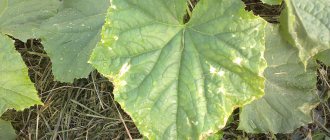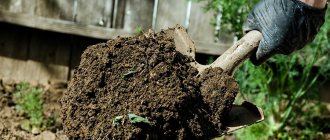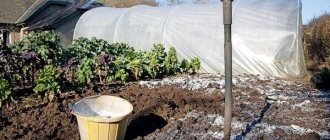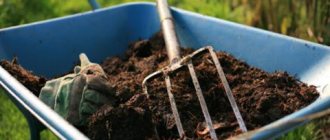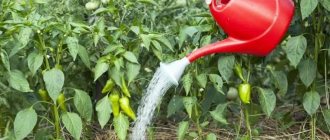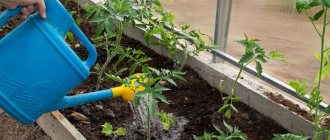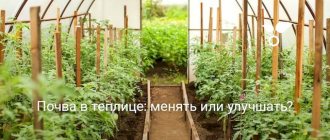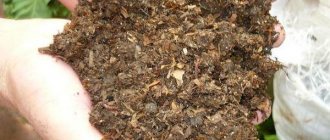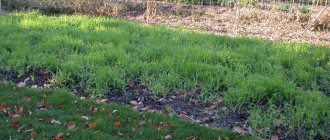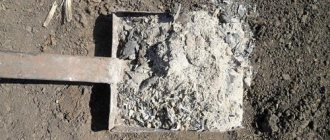Tomatoes are heat-loving plants that produce tasty and juicy fruits. But to enjoy them in the fall, you will have to spend a lot of effort. Tomatoes are capricious plants and will not grow just anywhere. Therefore, the process of growing them must be treated very carefully.
You will have to take special care of the soil, and not only for seedlings - the soil that is in the greenhouse where tomatoes will grow in the summer also needs special preparation.
Preparing soil in a greenhouse for tomatoes in the fall
Here you will learn:
What kind of soil do tomatoes need?
Before you learn how to properly prepare the soil for planting seedlings, you should also become familiar with what the soil for tomatoes should be like. What is the ideal land for tomatoes?
She must be:
- loose;
- rich in organic matter;
- well drained;
- free from various pests;
- easy to heat up;
- rich in minerals (calcium, magnesium, potassium, phosphorus);
- its optimal temperature is 18-20 degrees;
- with pH = 6.0-6.5, but can also be from 5.5 to 6.8.
Tomatoes are quite capricious, so the soil in the greenhouse must meet a number of requirements
Table. Basic characteristics of soil for tomatoes.
| Property | Meaning |
| Porosity | 65-75% |
| Moisture capacity | Min 45-50% |
| Air capacity | 20-25% |
| Density | 0.4-0.6 g/cm2 |
The most important soil parameters for tomatoes are water permeability and looseness. These plants have a strong, branched root, sometimes going into the soil to a depth of 1 m. Its main part is located in the first 50 cm of the soil. The plant needs a lot of moisture. Lack of water will negatively affect the condition of flowers, ovaries, the size of fruits, and may even lead to the death of the plant. Therefore, the soil must hold and pass moisture well.
On a note! The higher the size of the bush the variety, the less it feels the lack of moisture. But short tomatoes do not tolerate drought very well.
However, overwatering can have a bad effect on the tomato - it can rot and die.
Layout of the tomato root system. A - in a richly irrigated area, the roots are placed more shallowly. The bulk of the roots are located closer to the soil surface. B - in a poorly irrigated area, the roots go steeply into the soil. The bulk of the roots are located deep
Precursor plants for tomato are not of great importance. But it will still be good if you decide to grow tomatoes where cucumbers or cabbage or other cruciferous plants previously grew. The hero of our article does not like the soil where nightshades, for example, eggplants and potatoes, were fruited and grown before him. Tomatoes grow well where legumes and onions were previously grown. You can also grow radishes and lettuce in front of tomatoes.
The best predecessors for tomatoes
On a note! Tomato is an excellent predecessor for almost any vegetable; it leaves behind very clean and high-quality soil without weeds.
In general, the tomato is not picky about the soil, but the better conditions are created for its growth, the greater the harvest it will produce. So you should not neglect either autumn or pre-planting soil preparation.
Soil for planting tomatoes in a greenhouse
Granulated chicken manure
In the production of finished fertilizer, bird droppings are dried and converted into small granules or powder form so that they can be easily integrated into the soil. Pelleted chicken manure is rich in nutrients and great for many plants, particularly vegetables. Dry chicken manure does not have an unpleasant odor and does not acidify the soil, since it has an acidity close to neutral (pH - 5.9-6.1). Granulated chicken manure is sterilized during production, which greatly simplifies its use.
Soil preparation depending on the soil
The approximate ideal composition of soil for tomatoes is peat, sand, compost at 60%, 20% and 20%, respectively. It is in this case that the soil will have the best performance. However, peat is difficult to find in some regions of the country, so it is often replaced with sand. But this is not the best option, since the moisture capacity of such soil is worse, and it will also have to be watered more often.
The quality and composition of soil in general is highly dependent on the region, area, even the location of the site on a smaller scale. And therefore, before working on preparing the soil, you need to determine what kind of soil you have. To do this, carefully examine and feel the soil, paying attention to its physical characteristics.
Types of soils
Take some soil in your hand, slightly moisten it into a thick paste and roll it into a sausage about 3mm in diameter. After that, try twisting it into a ring and see what happens.
- If you can make the ring easily, it means you have heavy clay soil.
- If the ring cracks, but you still get a sausage, you have loam, medium-heavy soil.
- If you can’t make a sausage, not just a ring, then you have sandy loam or light soil.
How to determine soil type
Each type of soil has its own advantages and disadvantages. For example, sandy loam holds water very poorly, but it is easier to get wet during watering. But along with water, useful substances also flow deep into the earth, so such soils need to be fertilized more. Also, an undoubted advantage of sandy loam is its rapid warming up, so seedlings can be planted in such soil earlier. Clay or peaty soils, on the contrary, are much colder.
It is also important to know the pH value of the soil in order to determine what fertilizers need to be added to the soil. This indicator can be determined using a special test, which is sold in any gardening store.
Soil acidity test
How to determine soil acidity
Acidity level scale (pH)
On a note! The amount of organic matter in the soil is approximately 10%, and the remaining 90% are mineral components.
By the way, the stages of preparing the soil for planting tomatoes will depend on the type of soil. Experts advise that clay soils must be prepared in the fall, but loam or sand can be prepared for planting at the very beginning of spring.
Basic procedures that need to be carried out when preparing the soil for tomatoes (depending on the specific needs of the soil)
Liming . It is produced both in autumn and spring - the substance is introduced into the soil to a depth of about 30 cm. Lime will help lower the pH level and also enrich the soil with calcium and magnesium. But this substance can also be different. Remember that slaked lime reacts much faster, which means pH fluctuations will be more noticeable - in some cases this can be harmful. But the calcium-dolomite mixture contains extremely little magnesium.
Liming the soil with wood ash
Adding organic matter . The soil must be fertilized with compost, humus and allowed to stand for some time. A little later it is dug up to improve soil aeration. As the name implies, organic matter will enrich the soil with organic nutrients.
Compost
Compost bin layout
Sifting the finished compost
Attention! If you use rotted tops of garden plants as compost, then make sure that there are no old dead tomato plants in it - they can be carriers of soil diseases that destroy the crop.
Mulching . The soil at the planting site can be covered with mulch or cloth. This will ensure good moisture retention.
Mulching is covering the soil with a continuous layer of mulch, through which moisture does not evaporate and competing weeds cannot break through. It is better to mulch with “natural” materials: peat, humus, sawdust, pine needles, straw, grass clippings, leaves, tree bark, etc.
Mulching with inorganic materials
Application of soil amendments . You can add bone meal or other mineral supplements to the soil - this is a good source of phosphorus and calcium. Add at least two weeks before planting, so you can do it in the fall.
Bone meal (bone meal) is a product of processing animal bones, used as phosphorus fertilizer (contains 29-34% P2O5)
Pre-sowing soil preparation
Bone meal prices
bone flour
Ready-made mineral options
Answering the question of how to fertilize the soil in a greenhouse in the fall, every self-respecting owner will answer that phosphorus-potassium complexes will be the most important, but you should not add nitrogen-containing preparations, because this is a waste of time, effort and money.
The peculiarity and main advantage of ready-made mineral fertilizers is their extremely high concentration, which results in minimal consumption of substances. There is no need to carry heavy buckets, just spread the granules or spray the powder evenly.
At the same time, the most popular for greenhouses are:
- Potassium chloride and potassium salt are an excellent option for autumn procedures, because during the long autumn-winter period the dangerous toxin disappears.
- Potassium sulfate is ideal for use in greenhouses intended for growing chlorine-sensitive crops. Apply in dry form at the rate of 30-40 g
- “Superphos” is a neutral fertilizer; as a source of phosphorus, it is most relevant in greenhouses with soddy-podzolic soil. Consumption of at least 15 and up to 45 g.
- “Superphosphate”, simple or double, is a saturated source of phosphorus. Suitable for any type of soil with a consumption of 40-60 g.
At the same time, it is not recommended to use the popular complexes “Nitroammofoska”, “Karboammofoska”, “Ammofoska” and others in the fall, because they are rich in nitrogen, which can have the opposite effect and only cause harm.
Whether you add a single-component nutritional composition or apply a complex combination of minerals is up to you. Adherents of everything natural prefer organic preparations, while more progressive users prefer ready-made mineral formulations. It all depends on personal preferences, the size of the greenhouse and financial support, but everyone still needs to make a decision personally.
Soil preparation instructions
Why is it worth preparing the soil for planting in the fall? This procedure is due to several factors.
So, soil preparation:
- helps reduce the risk of crop disease;
- will provide a high yield;
- will destroy pests - both microorganisms and the larvae of various parasites;
- will improve the quality of the soil and nourish it with useful substances.
How does the autumn stage of preparing the soil for spring planting of tomatoes proceed? The algorithm of actions is as follows.
Step 1. First of all, you just need to clean up the greenhouse. To do this, remove all plant remains from it - both weeds and cultivated ones. If you leave them until spring, various parasites and pests can easily overwinter on them. Also, old plants will simply interfere with further work in the greenhouse.
Cleaning the greenhouse
Step 2. One of the cleaning stages is a thorough washing of all parts of the greenhouse: glass, frame, etc. If the plants have been doing well throughout the summer season, then simply hose off the entire greenhouse with water. If they were affected by any disease, then make a solution of bleach and wash the greenhouse with it. Prepare the solution as follows: dilute 400 g of the substance in a bucket of water. You can also use a solution of laundry soap: grate 200 g of soap and dissolve in a bucket of hot water. We will touch on more serious pest and fungus control a little later.
Washing all greenhouse elements
Step 3. Where the paint has peeled off, touch up the frame of the greenhouse and renew it.
Step 4: Tackle the soil. Dig the soil thoroughly.
Dig the soil thoroughly
Step 5: Get ready to fertilize the soil. For this you will need compost or humus, you can also buy peat. Apply organic matter to the soil as follows - about 5-12 kg of fertilizer per 1 m2.
Attention! It is better not to use fresh manure - it can harm the soil. It also contains many dangerous microorganisms.
Organic fertilizers for greenhouses
Peat prices
peat
Step 6. Treat the soil with biological preparations (“Siyanie-1”, “Baikal EM-1”) at the rate of 3-5 liters per 1 m2. This way you will destroy pathogenic bacteria and fungi.
Microbiological fertilizer "Baikal EM-1"
Beware of fakes!
Prices for "Baikal EM-1"
baikal em 1
Step 7. Depending on the type of soil, you can add mineral fertilizers in the fall - phosphorus, nitrogen and potassium. Place them 5-7 cm deep into the soil and loosen them with a fork, at the same time removing any remaining weeds, if any.
Table of feeding mixtures for tomatoes
On a note! If time permits, you can use green manure plants instead of organic fertilizers: mustard, peas, lupine, beans.
Video - Preparing the greenhouse for winter
When is the best time to plow in manure? Should I apply manure in the fall or wait until spring?
Manure is an excellent fertilizer, but not everyone uses it wisely. But thoughtlessly adding manure to the soil will not give the desired result. You will receive not fertile land, but diseased land. Let's look at the aspects of this “fragrant” fertilizer.
Manure is a waste product of animals, or rather fermented plant residues. No matter whose droppings we use, virtually all living things only metabolize about 45% of the food they ingest. The remaining undigested residues are excreted. But during the digestion process, these residues are enriched with beneficial bacteria that inhabit the animal’s intestines. It is these microscopic creatures that increase soil fertility. They speed up the process of decomposition of organic matter and make “inedible” things “edible” for plants. Manure also contains large amounts of phosphorus and potassium, as well as nitrogen and carbon dioxide, which are released during the process of overheating the manure.
If you scatter manure in the fall and immediately incorporate it into the soil. Then all the mineral components will remain safe and sound, but the biologically active bacteria will simply die. Therefore, autumn application of manure directly into the soil is not advisable. And in this case, the manure itself is consumed 4 times more.
There is a method that has been proven over the years to obtain good fertilizer for plants from the same manure. But in the longer term. In the fall, manure is put into composting. It is recommended to make the so-called “layer pie”. Straw, food waste, sawdust, grass clippings or fallen leaves are placed between the layers of manure. To speed up the process, you also need to add the drug “Shine-1” or “Baikal EM”. They contain a huge number of biologically active bacteria that will quickly break down organic matter.
By spring you will have compost that is half finished. Its full ripening will occur only after a few years, but now it can be used for adding to the beds. It is worth noting that now manure consumption is reduced by 4 times, and this is quite a saving.
How to get rid of diseases?
What to do if all summer you have been suffering with sick and dying tomatoes? Most likely, they were affected by some pathogenic microorganisms or fungus. This means that all measures should be taken to ensure that history does not repeat itself next year.
Step 1. Similar to the standard procedure for preparing the soil and greenhouse, remove all dead plants along with the roots in the fall.
Step 2. Remove the top layer of soil - approximately 10-20 cm - and replace it with fresh one. It is advisable not to take replacement soil from your garden.
Replacing topsoil in a greenhouse
On a note! The removed layer can be thoroughly steamed or calcined - this will destroy all pests and parasites. But if the greenhouse is large, this procedure will be extremely difficult to carry out.
Step 3. Remove all ropes and garters, especially those made of natural fabrics, as well as wooden sticks - pathogens can settle on them.
Step 4. Sow the soil with white mustard - the substances that this plant secretes are destructive to most pathogens of fungal diseases. You can also spray the soil thoroughly with fungicides.
White mustard
On a note! Many people advise using smoke bombs with sulfur to destroy pathogenic organisms. The method is somewhat extreme, but fail-safe.
Step 5. Don't forget to thoroughly treat the walls of the greenhouse and its frame with soap or lime, as in the previous guide.
Greenhouse room treatment
Step 6. After completing all work, leave the greenhouse open for the winter so that the soil freezes well.
The greenhouse must be left open
On a note! If the tomatoes were very sick throughout the summer, then it is best not to plant them there again even after treating the greenhouse and soil in the fall. Plant other plants in this place, and move the tomatoes to another place for a couple of years.
Wash and disinfect frame and walls
To get rid of fungi, bacteria and wintering pests, the walls of the greenhouse must be thoroughly washed with a soapy solution, both inside and outside. It is worth adding copper or iron sulfate to the solution to make it even more effective.
Then you need to close the greenhouse and light a sulfur bomb inside, placed on a brick or other flat, hard, non-flammable surface. Although the bomb burns for several hours, you cannot enter the greenhouse for three days, so as not to inhale sulfur dioxide. After using the checker, the greenhouse must be thoroughly ventilated, washed again to remove soot, and then add preparations that help restore soil fertility (for example, Baikal EM1, Biocomplex BTU Soil Improver, etc.), because As a result of fumigation, many beneficial fungi and bacteria die along with diseases.
In greenhouses, the frame of which is made of unpainted metal profiles, sulfur bombs cannot be used, because this will lead to corrosion.
Wooden frame parts should be sprayed or painted with a 3% solution of copper or iron sulfate to protect them from rotting and pathogenic fungi. Particularly carefully, with the same solution, it is worth treating joints, crevices, cracks and other secluded places where pests willingly settle down for the winter.
How to fertilize and feed the soil in the fall in a greenhouse
Let's start with organic matter; organic fertilizers include humus, compost, wood ash, manure and bird droppings.
Humus is manure that has been rotted down to the state of soil. It usually takes two seasons for manure to reach a state where it is indistinguishable from normal soil. Weed seeds are not preserved in humus, and pests and diseases do not survive there. Consequently, humus can be safely added to the soil of the greenhouse and greenhouse in the autumn.
- About 2-3 kg per square meter is added to the greenhouse for digging.
- In the greenhouse 3-4 kg per square meter for digging.
Humus for the greenhouse.
The fertilizer is evenly scattered over the surface of the soil and embedded in the soil to a depth of 12-15 cm. This can be done at any time of day convenient for you in the autumn season.
Compost is organic matter that has decomposed into soil. A variety of organic residues, composted over a couple of seasons, are excellent feeding that any greenhouse will be happy with. Compost is a less active fertilizer than humus and can be used in higher concentrations.
- Usually 4-5 kg of compost per square meter is added to the greenhouse in the autumn.
- 5-6 kg of compost in the greenhouse.
Compost for the greenhouse.
Wood ash is a rich source of microelements and, most importantly, potassium. Wood ash contains up to 5% potassium available for plants. Among other things, wood ash can deoxidize the soil; it acts very gently, usually leveling the pH of the soil. Wood ash is added in the autumn (in the greenhouse and in the greenhouse in the same concentrations) approximately 250-300 g per square meter, embedded in loose and fairly well-moistened soil.
Wood ash.
Manure is usually applied in small quantities in the fall. This is an active fertilizer that requires overheating in the soil. It is advisable to apply manure no later than mid-October so that it has time to transform into a form accessible to plants. Application rate:
- 1-2 kg per greenhouse.
- 1.5-2.5 kg in a greenhouse, for digging up soil.
Manure for greenhouses and greenhouses.
Bird droppings are usually applied in even smaller quantities than manure. That's enough:
- 500-700 g per square meter of greenhouse.
- 600-800 g per square meter panic for digging the soil.
Bird droppings
Mineral fertilizers ; in the autumn, only phosphorus and potassium fertilizers are usually used. Of the phosphorus minerals, superphosphate is most widely used, and of potassium minerals, potassium sulfate.
If cucumbers, tomatoes and similar vegetables that produce a large yield and have significant above-ground mass were grown in a greenhouse, then the doses should be large. A tablespoon of superphosphate and potassium sulfate per square meter of soil for digging.
If green crops were grown in a greenhouse or greenhouse, then you can get by with a dose of a couple of teaspoons per square meter of greenhouse soil for digging.
Dolomite flour is used as an additional element to deoxidize the soil, and river sand is usually used for loosening.
Dolomite flour for fertilizing a greenhouse in the fall.
If the soil in a greenhouse or hotbed has high acidity, then in the autumn, during digging, it is necessary to add 500-600 g of dolomite flour per square meter in order to reduce the acidity of the soil and make it normal.
On dense, clayey soils or soils that are tired and compressed, it is necessary to add a baking powder. Usually this is river sand, which you need in a standard bucket per square meter of soil for digging.
Where to get chicken manure
Most bird keepers you can easily find near you will be happy to part with one bucket of bird droppings. Judge for yourself: for every 100 g of feed eaten by a chicken, about 40 g of litter is produced. The average laying hen eats 120–160 g per day, with an annual litter production of 17.5–24 kg. So they are willing to share chicken droppings with you anyway, but they can also sell them inexpensively. When purchasing, give preference to dried manure; it is easier to compost.
You can also buy ready-made fertilizer made from dried chicken manure in bags at many garden centers. As a rule, manufacturers additionally enrich the composition with microelements. If you choose ready-made fertilizer, then you can skip the section on composting chicken manure and the rules for its use: apply fertilizer based on chicken manure, following the manufacturer’s instructions, and for general development, go to the corresponding chapter of our article.
Chicken manure is sold in the form of granules, powder and as a concentrated liquid fertilizer
How to fertilize the soil in a greenhouse and greenhouse
Usually the process of applying fertilizers itself is not difficult. The first step is to prepare the soil of the greenhouse and greenhouse:
- Free it from any plant debris. It is necessary that the soil surface is absolutely clean.
- The second, important stage after harvesting is the first digging of the soil. When we dig up the soil, we free it from parts of the roots of both cultivated plants that were grown in a greenhouse or greenhouse, and from the roots of weeds. It is better to dig up the site in warm and dry weather.
Digging the soil in a greenhouse.
- The next stage is the actual spreading of fertilizers. In the autumn, any type of fertilizer can be applied to both dry and moist soil. There is no fundamental difference here, but it is much easier to work with dry soil.
- Spread as evenly as possible - spread in an even layer over the surface of the soil of the entire greenhouse or greenhouse. In the case of various organic fertilizers, this is often not difficult to do.
As for mineral fertilizers, there may be a certain problem - they are not always enough to cover the entire surface. In this case, the soil in a greenhouse or greenhouse can be divided into squares. An equal dose of one or another mineral fertilizer should be added to each square.
- When the fertilizers are distributed, the stage of digging the soil begins. You need to use uniform movements, trying to dig to an equal depth, and embed them into the soil by turning the layer with a shovel.
Ultimately, fertilizers should be embedded in the soil to a depth of 12-15 cm. This is the optimal depth for the final processes of decomposition of the initial elements of the fertilizer to substances available for consumption by plants.
Actions of biological products
Biological products are an excellent means for disinfecting greenhouse soil in the fall. How do the drugs work, what are their benefits?
- Diseases left by the previous harvest are eliminated.
- Larvae and eggs left by insects to overwinter in a warm shelter successfully die under the influence of biological products.
- They promote stimulation and make fertilizers act faster.
- Helps organic decomposition of nutrient mixtures.
- Binds and smooths out the effects of heavy metals and pesticides.
- Improves soil structure.
Fitosporin
One of the best universal remedies that can disinfect soil from such popular diseases as blackleg, powdery mildew, late blight, fusarium, fungi and mold. It is diluted according to the instructions and watered on the beds.
Phytocide
This is just a thunderstorm of all microbes. With its powerful action, it accelerates and stimulates the processing of organic matter and minerals, turning them into humus, which is so necessary for the fertility of the earth. It is enough for one hundred square meters in a volume of five liters to destroy all harmful microbial environments.
Is it possible to feed vegetable crops with humus?
Chicken manure is several times higher than cow manure in the content of many substances: nitrogen, phosphorus, magnesium, chalk, manganese and zinc. They are used only to feed after watering or rain, and the mixture should not be poured into the hole.
The introduced manure has a beneficial effect on the soil and, 3 years after fertilizing, is a “long-lasting” fertilizer.
But don’t forget that you should never bring it in its pure fresh form! Especially in seedlings.
Advantages of adding chicken humus to tomatoes and cucumbers:
Infusion of chicken manure
- There are no toxic substances.
- Long-term beneficial effect on the soil.
- Improves the quality of the soil.
- Accelerates fruit ripening.
- Reduces soil acidity.
- Easy to use.
- Increases plant resistance to disease.
Is it possible to feed vegetable crops with humus?
Chicken manure is several times higher than cow manure in the content of many substances: nitrogen, phosphorus, magnesium, chalk, manganese and zinc. They are used only to feed after watering or rain, and the mixture should not be poured into the hole.
But don’t forget that you should never bring it in its pure fresh form! Especially in seedlings.
Advantages of adding chicken humus to tomatoes and cucumbers:
Infusion of chicken manure
- There are no toxic substances.
- Long-term beneficial effect on the soil.
- Improves the quality of the soil.
- Accelerates fruit ripening.
- Reduces soil acidity.
- Easy to use.
- Increases plant resistance to disease.
Step-by-step preparation of liquid solution
| Stage 1. Prepare everything you need |
You need a large container or several containers if they are small . Approximately half the volume of dried chicken manure is poured into them; this is the best option.
Fresh litter must be pre-prepared, as it contains a high content of uric acid . To do this, place it in the sun for several days so that the acid evaporates faster. Then the droppings are soaked - water is poured in, which is changed to clean water 3 times with an interval of 12 hours. After this, the litter can be used
Fill the containers with warm water to the top . Close the containers with lids and place in a warm, shaded place for fermentation.
Check the process periodically . Usually fermentation ends after 2 weeks, but the process can last longer. After this, the composition is ready for use
Mix the contents of the container well . Work in a respirator, as the smell is not the most pleasant.
Pour into a bucket or other container . Since fertilizing cucumbers and other vegetable crops requires a low concentration, the proportions are 1 part litter to 30 parts water. That is, 300 ml of concentrate is poured into a 10-liter bucket
Use fine ash from burning wood and grass residues . The norm is about a glass per bucket of solution.
Ash increases the content of beneficial microelements and serves as a means of preventing pests . But most importantly, it makes the smell much weaker
Pour clean warm water into the mixture of droppings and ash . Fill the bucket until full and mix all ingredients well.
It is better to dilute the composition immediately before use . It can no longer be stored in this condition.
Before fertilizing, cucumbers must be watered . Or you can carry out work after it rains.
Water as usual to thoroughly saturate the soil . This reduces the risk of burns and accelerates the absorption of nutrients.
Adviсe
Do not use fresh chicken manure as the high concentration of uric acid can burn the plant roots. An option for using fresh litter is only in liquid and weakly concentrated solutions.
To make the droppings less caustic, it should be left for some time in the fresh air under the open sky. The uric acid will thus evaporate, and the remaining fertilizer can be used without fear.
If, when watering with a nutrient solution, some of the liquid gets on the leaves, it must be immediately washed off with water to avoid burns.
By clicking on the link, you can learn more about how to feed potatoes before hilling.
When working, be sure to wear gloves and, preferably, a protective suit. This fertilizer (if it is not granular) contains a significant amount of helminths and other parasites, and there are also harmful microorganisms. Therefore, do not allow the substance to come into contact with clothing, skin, or hair.
So, we learned how to use chicken manure to feed cucumbers. As you can see, this simple organic fertilizer has a very complex composition, which includes almost all the microelements that plants need. It is important to prepare solutions correctly, since a high concentration of droppings is unacceptable and harmful to the soil and plants: the recipes given in the article will help you properly feed cucumbers with this valuable fertilizer.
What can you fertilize with chicken manure?
Chicken manure will benefit plants that require a lot of nitrogen. Generally, the plants with the highest nitrogen requirements are leafy plants such as brassicas. However, many plants will benefit from the nitrogen and other nutrients contained in the droppings.
Do not add chicken manure to ericaceous (acid-loving) plants such as azaleas, rhododendrons, hydrangeas or blueberries, as chicken manure-based fertilizers typically have a slightly alkaline pH.
It's also important to remember that chicken manure can also enrich the soil in a woodland or orchard without any intermediate steps. This can be especially beneficial for berry bushes with high nitrogen needs, such as plums and blackcurrants.
